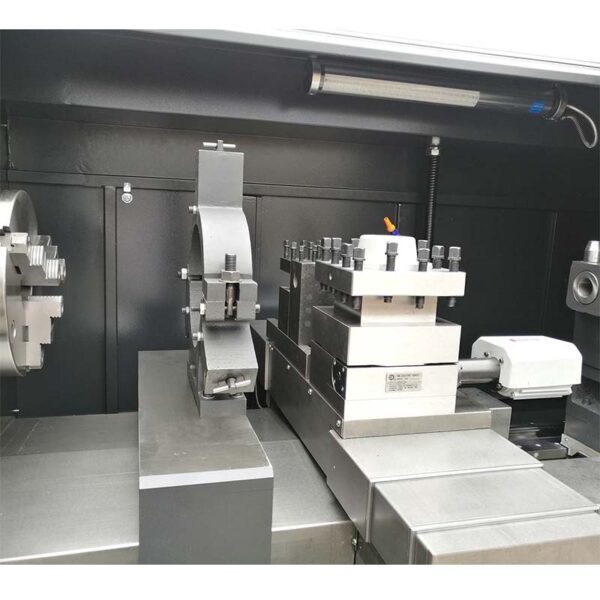
In the ever-evolving landscape of manufacturing, optimizing production efficiency is paramount for businesses seeking to remain competitive and profitable. CNC machine tools are integral to modern manufacturing processes, and improving their efficiency can lead to increased productivity, reduced costs, and higher-quality products. In this blog post, we will delve into various strategies and tips to enhance the production efficiency of CNC machine tools.
Invest in Comprehensive Training: Begin by providing thorough training programs for CNC machine operators. Ensure they have a strong grasp of machine operation, tool handling, and programming.
Promote Skill Development: Encourage operators to continually develop their skills and knowledge. Foster an environment of learning and growth.
Certification Programs: Consider sending operators to relevant workshops or certification programs to keep them up-to-date with industry best practices.

Develop SOPs: Create standardized operating procedures (SOPs) that outline best practices for machine setup, tool changes, and routine maintenance.
Enforce Adherence: Ensure that all operators consistently follow these SOPs to maintain a uniform and efficient production process.
Regular Audits: Implement regular audits and quality checks to verify compliance with SOPs.
Invest in Quality Tools: Choose high-quality cutting tools appropriate for the materials and machining operations. Quality tools typically last longer and provide better results.
Tool Management System: Establish an effective tool management system to ensure tools are well-maintained, calibrated, and replaced when necessary.
Tool Life Monitoring: Utilize tool life monitoring systems to optimize tool change intervals, reducing downtime.
Effective Workholding: Use efficient and reliable workholding solutions, such as chucks or collets, to securely grip workpieces during machining.
Explore Advanced Fixturing: Investigate advanced fixturing techniques like quick-change setups or modular fixtures to minimize setup times between jobs.
Optimize CNC Programs: Streamline CNC programs to minimize toolpath movements and reduce cycle times without compromising on product quality.
CAM Software: Employ CAM (Computer-Aided Manufacturing) software with advanced toolpath optimization features to automate programming enhancements.
Advanced Strategies: Consider employing advanced toolpath strategies like high-speed machining (HSM) or trochoidal milling for increased efficiency.
Scheduled Maintenance: Implement a proactive maintenance schedule to ensure CNC machines are in optimal working condition. Regular maintenance reduces the risk of unexpected breakdowns.
Calibration: Regularly calibrate the machine’s axes, spindle, and tool changer to maintain accuracy and minimize errors.
Timely Repairs: Address any issues promptly to minimize unplanned downtime.
Robotic Solutions: Explore the integration of automation solutions such as robotic loaders or bar feeders to enable continuous machining with minimal operator intervention.
Real-Time Monitoring: Implement real-time monitoring systems to track machine performance and receive alerts for potential issues.
Encourage Feedback: Foster a culture where operators are encouraged to identify inefficiencies and suggest improvements.
Regular Reviews: Hold regular review meetings to discuss production bottlenecks, implement efficiency-enhancing measures, and track progress.
Data Collection: Collect and analyze data related to machine utilization, tool wear, and cycle times to identify areas for improvement.
Performance Metrics: Establish clear performance metrics and goals to measure the success of efficiency initiatives.
Optimized Scheduling: Carefully plan job schedules to minimize machine idle time and maximize throughput.
Workload Balancing: Balance workloads between machines and operators to ensure efficient resource utilization.
In conclusion, improving the production efficiency of CNC machine tools is a multifaceted endeavor that involves optimizing various aspects, from operator skills and tooling to programming and automation. By implementing these strategies and fostering a culture of continuous improvement, manufacturers can unlock the full potential of their CNC machine tools, reducing costs and staying competitive in today’s dynamic manufacturing environment.